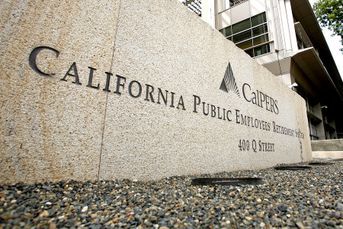Assets up despite dearth of institutional inflows
Asset inflows improved for many of the largest publicly traded money managers in the third quarter, but analysts said that institutional investors continued to hold off on new mandates
Asset inflows improved for many of the largest publicly traded money managers in the third quarter, but analysts said that institutional investors continued to hold off on new mandates.
“Generally speaking, institutional investors are kind of on the sidelines,” said Michael Kim, an analyst with Sandler O’Neill & Partners LP. “There is not a lot of replacement activity; we do not see a tremendous amount of money being moved.”
Among those companies experiencing overall net inflows during the third quarter were Affiliated Managers Group Inc., BlackRock Inc., BNY Mellon Asset Management, Franklin Resources Inc. and T. Rowe Price Associates Inc.
Analysts and chief executives of money management companies expressed optimism that institutional investors will be forced to take more risk in 2011, moving out of lower-fee passive strategies and into higher-fee active investment strategies in an attempt to improve returns.
“Given the liability for most investors, a 3% or 4% return is not going to do it,” said Robert Lee, an analyst with Keefe Bruyette & Woods Inc.
Laurence Fink, BlackRock’s chairman and chief executive, emphasized the same theme as he announced the company’s third-quarter results. During a conference call with analysts Oct 20, he said he thinks that institutional investors will have no choice but to invest in new strategies that carry volatility and take more risks to pay their liabilities.
“So if one believes we’re going to have a persistence of low rates for a while globally … and this is the type of conversations we’re having with foundations and endowments, they’re going to have to allocate more to equities and alternatives,” Mr. Fink said. “So these are very difficult conversations.”
Mr. Fink said he also expects pension officials to increase risk levels.
BlackRock reported assets under management of $3.446 trillion as of Sept. 30, up 9% from the second quarter and 140% from a year earlier, before its Dec. 1, 2009, acquisition of Barclays Global Investors. The roughly $295 billion gain in BlackRock’s AUM from the second quarter mostly came from $212.5 billion in market-related gains and $67.3 billion of foreign-exchange-related gains.
Net inflows were $15.6 billion.
However, based on flows by asset class, BlackRock lost some of its more profitable business in the third quarter.
Active equity strategies — which generate higher fees — accounted for $15 billion in outflows. Passive equity strategies, which are index-based and have lower fees, saw inflows of $6 billion.
In fixed income, BlackRock saw $31.6 billion of inflows into less lucrative passive products, while higher-fee-generating active bond strategies had $8 billion in outflows. Also, BlackRock’s active quantitative strategies saw net outflows of $10 billion.
BlackRock also reported more than $24 billion in “concentration-related outflows,” reflecting efforts by some clients to limit their exposure to any single firm following the merger of BlackRock and BGI.
Ticonderoga Securities analyst Douglas Sipkin downgraded BlackRock to “hold,” from “buy,” after the earnings report. He said that inflows into active strategies at BlackRock have deteriorated since the company acquired BGI.
“At some point, you can’t overlook the active outflows,” Mr. Sipkin said.
PRICE IS RIGHT
T. Rowe Price had one of the strongest performances among managers in the third quarter, with a record-high $439.7 billion in AUM. That is up 12.4% from the second quarter and 20% higher than a year earlier.
The firm boasted net inflows of $8 billion, along with $40.6 billion in market-related gains.
Jefferies & Co. Inc. analyst Daniel Fannon said that $6 billion of those inflows came from institutional investors.
“The push into institutional business seems to be paying off,” he said.
Franklin Resources had $19.4 billion in inflows for the latest quarter, compared with $18.8 billion in the second quarter and $12.2 billion a year earlier. The inflows helped bring AUM to $644.9 billion for the quarter ended Sept. 30, up 13% from June 30 and 23% higher than the total for the year-earlier quarter.
Franklin’s performance was fueled by strong global sales, chief executive Greg Johnson said during an Oct. 28 conference call.
He attributed $4.6 billion of the net inflows to one institutional client with a fund in Romania. Mr. Johnson didn’t identify the client.
Another strong performer for inflows, BNY Mellon Asset Management, reported an increase of 9% in AUM from the second quarter and an 18% increase from a year earlier, putting the firm at a record $1.141 trillion in AUM.
Parent Bank of New York Mellon Corp. said in its third-quarter earnings report that the $94 billion gain in assets by the money management subsidiary from the previous quarter included $29 billion in net inflows: $18 billion in money markets, and $11 billion in equity, fixed-income and alternative strategies.
Chief financial officer Todd Gibbons said during a conference call Oct. 19 that company officials continue to see significant movement into fixed income and alternatives. He also expressed optimism about equity flows.
The flows into bonds and alternatives have “actually balanced that business very nicely now because while equity has slowed down in terms of its outflows, that is starting to show positive inflows again,” Mr. Gibson told analysts during the call.”You have fixed income, you have alternatives and it’s only really the cash at this point that’s a weak spot,” he said.
Not all the managers reported inflows for the quarter.
State Street Global Advisors, the second-largest asset manager behind BlackRock, also was hurt by moves by institutional investors out of active strategies.
Revenue from SSgA’s asset business declined slightly from both last year’s third quarter and this year’s second quarter, said Jay Hooley, president and chief executive of parent State Street Corp.
“This decline was due primarily to a continuous movement out of active strategies and into passive and ETF strategies,” he said during a conference call with analysts.
Net new business at SSgA was slightly negative in the third quarter, down $3 billion, Mr. Hooley said. The company didn’t disclose exact outflows or revenue for SSgA in its earning statement.
AllianceBernstein LP reported net outflows of $18.9 billion for the latest quarter, up sharply from $4.7 billion for the prior quarter and $12.9 billion a year earlier.
Institutional clients accounted for the bulk of those net outflows, at $15.2 billion. Among the losses was a $2.3 billion subadvisory mandate from The Vanguard Group Inc.’s U.S. Growth Fund.
AllianceBernstein reported $484.3 billion in AUM as of Sept. 30, up 5.8% from the second quarter but down 2.7% from a year earlier.
Outflows also plagued Legg Mason Inc., which as of Sept. 30 reported assets under management of $673.5 billion, up 4.4% from the second quarter but down 4.2% from a year earlier.
Legg Mason reported net outflows of $12.7 billion in the third quarter, offset by market-related gains of $40.8 billion. Although outflows continued to be a trouble spot for the company, the quarterly decline was down from the $23.1 billion for the second quarter but up from the $8.1 billion a year earlier.
Of the $12.7 billion, $8 billion in outflows came from fixed-income strategies at its Western Asset Management Co. subsidiary. The unit suffered major losses during the financial crisis, and Legg Mason has been attempting to build back its franchise fixed-income manager even since.
During a conference call with analysts Oct. 27, Mark Fetting, Legg Mason’s chairman and chief executive, cited signs of improvement at Western Asset, noting that outflows were at the lowest level since December 2007. A large subadvisory account has been winding down, and that process will be completed in the current quarter, he said, declining to identify the account.
The second source of outflows that Mr. Fetting cited is a “global sovereign product” that has been hurt by low interest rates.
“Western has moved from defense to offense and has regained consultants’ confidence,” he said.
Mr. Lee said that though he hadn’t expected Legg Mason’s continuing outflows to reverse themselves completely in the third quarter, the turnaround is taking longer than anticipated.
Janus Capital Group Inc. also took a hit. Despite an 8% increase in AUM for the third quarter, Janus reported net outflows of $2.9 billion, up from the $1.1 billion in the second quarter.
The company’s institutional quantitative-stock-picking division, Intech Investment Management LLC, reported $2.1 billion in outflows, while $1.8 billion in outflows came from Janus’ traditional equity funds. Janus added $1 billion in fixed-income assets.
Janus had $1.3 billion in outflows in the second quarter, including $1.5 billion in net outflows from Intech. In the third quarter of 2009, Janus reported $800 million in net outflows, including $2.5 billion in outflows from Intech.
There hasn’t been a huge demand for Intech’s quantitative strategy since the financial crisis affected performance severely, Mr. Lee said.
“It kind of feels like it will be a slow bleed for a period of time,”” he said.
Janus chief executive Richard Weil acknowledged during an Oct 21 conference call with analysts that improved performance among Intech’s strategies in the third quarter is having little impact on institutional inflows.
“In the U.S., we’re not seeing any real material search activity. So it’s not a question of not winning in the U.S.; it’s a question of not being aware that there are ongoing searches for quantitative managers,” Mr. Weil said.
Mr. Weil told analysts that he expects Janus’ equity inflows to improve in coming months.
“Candidly, summer was a terrible environment for the equity markets inflows, and we’re seeing some stronger equity returns here in the fall, and we’re looking forward to operating under improved conditions,” he said.
Randy Diamond is a reporter for sister publication Pensions & Investments.
Learn more about reprints and licensing for this article.






